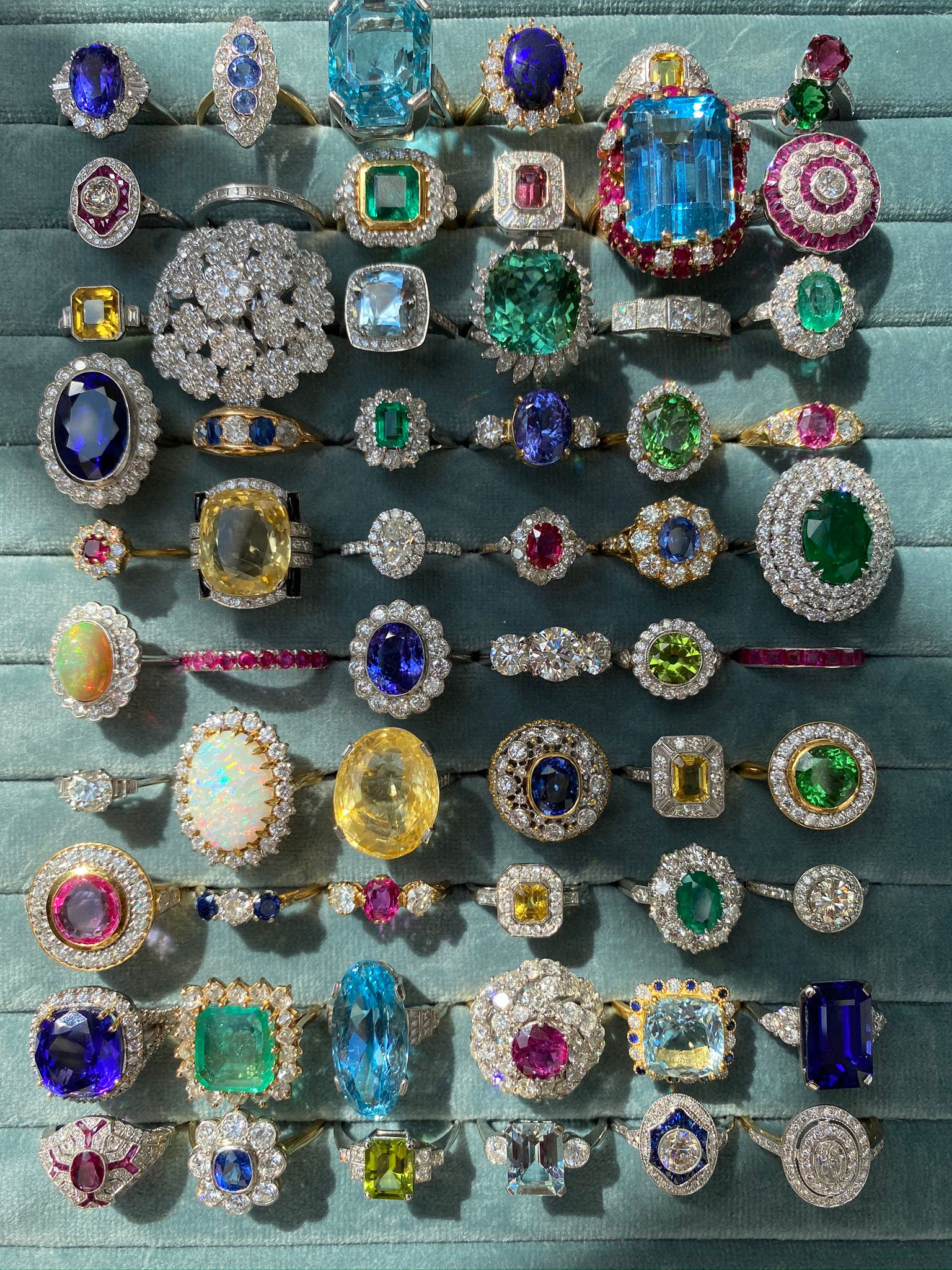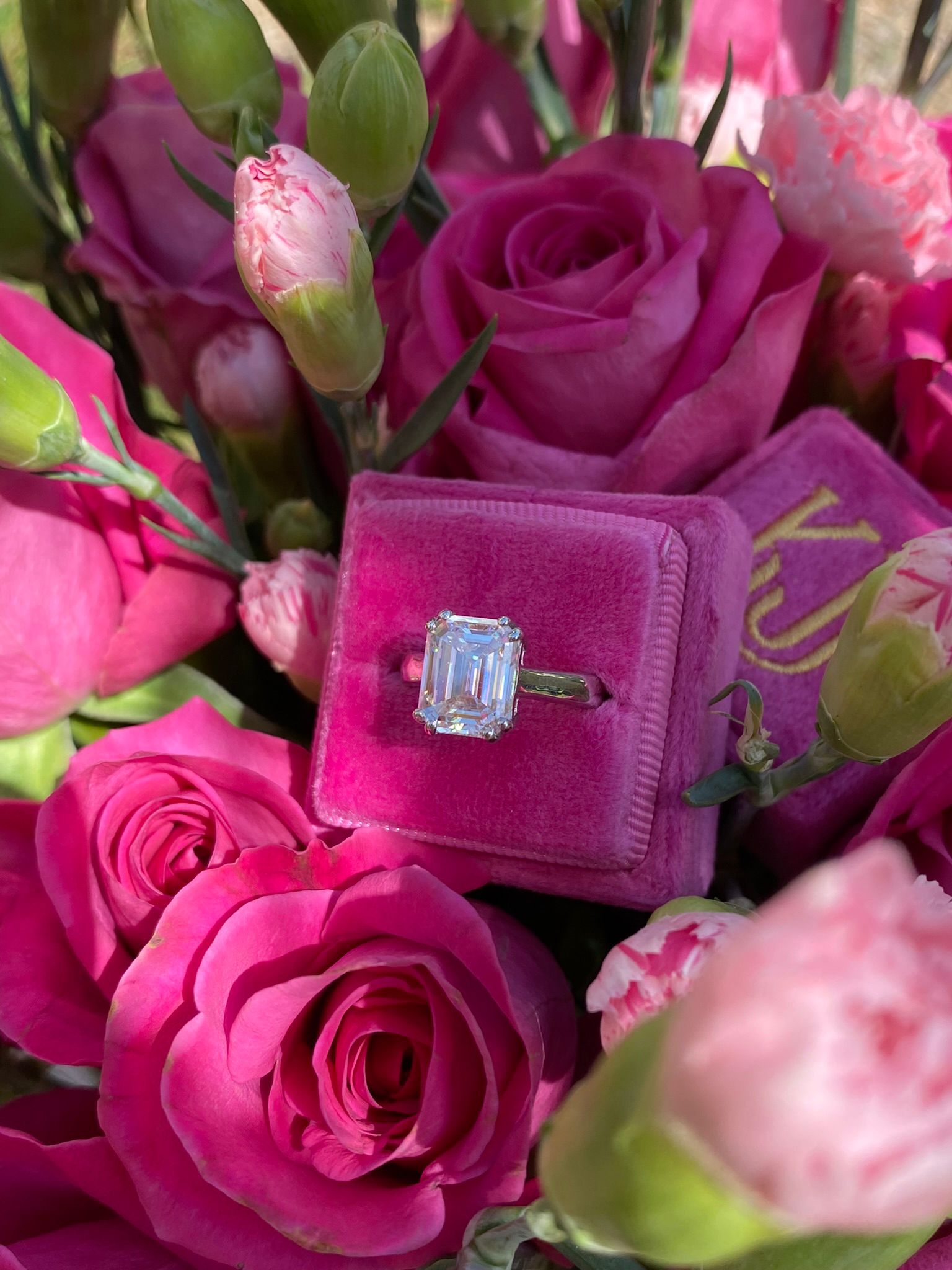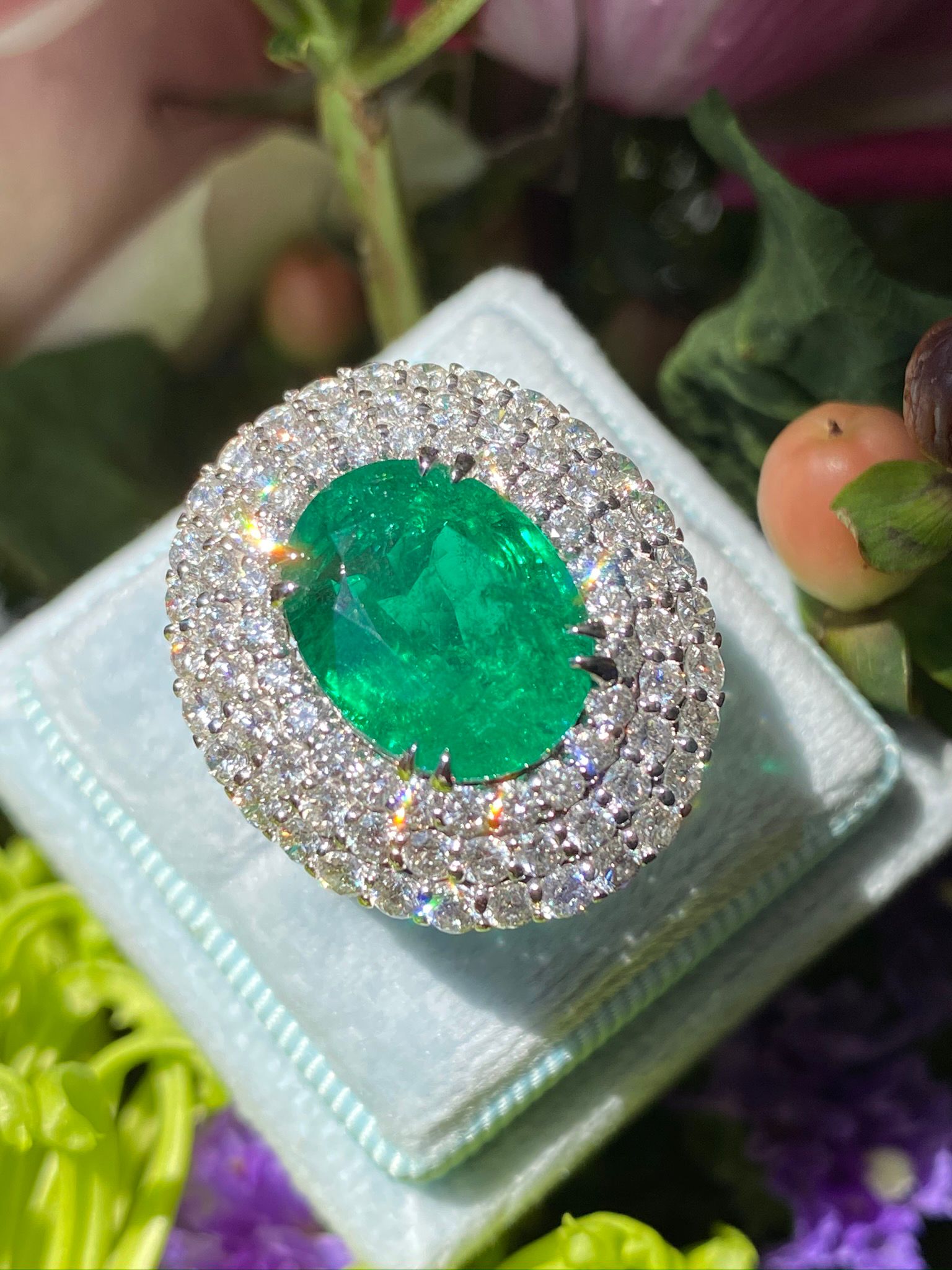What are Old Cut Diamonds?
Learn more about the evolution of Diamond cutting and the historical sparklers which never fail to charm us.

If you’re a fan of vintage or antique jewellery, you’ve undoubtedly come across one or more of the following descriptors: “Old Cut,” “Old Mine,” “Old Euro,” “OMC,” “Peruzzi,” etc. and probably wondered exactly what it meant for that stunning rock you were considering. Here, we break down some of the history and definitions behind Old Cut Diamonds, so you can start to make sense of these very special gems:
The Very First Polished Diamonds
Diamond polishing began in the 1300s and 1400s—before that, it was actually believed that altering a Diamond from its rough form would take away its “magical” properties and any possible benefits to the wearer. The polishing was crude and involved rubbing the stone’s surface with Diamond powder to make them more transparent. Since the natural shape of Diamonds is an octahedron (picture two pyramids stuck together, back to back), these first gems were called “point-cut stones.”
The Original Rose Cut Diamonds
By the 1600s, Rose Cut Diamonds were invented by grinding away at the rough much more dramatically. This resulted in the finished gem having a flat bottom and a domed top with a few facets, also ground by hand. The new shape was a major improvement, but obviously resulted in a huge amount of the Diamond rough being wasted in the grinding and shaping process. Rose Cuts have such a unique appearance that they’ve survived modern times and are still being cut today. With larger, fewer facets they offer less standard scintillation and sparkle then current cuts, but their flat bottoms often make them appear significantly bigger than other stones with the same weight, which can offer you fantastic finger coverage.
The Peruzzi Diamond
The earliest brilliant cut Diamonds were created by the mid-1600s. Venetian polisher Vincent Peruzzi was able to take the first brilliant cuts from 17 crown facets (the top facets surrounding the flat, top table facet) to 33, which made the stones significantly more sparkly than anything that had been seen before. “Peruzzi” Diamonds can still be found, and have a rounded square (or rough cushion) shape and obviously offer a very antique look.
Old Mine Cut Diamonds
Old Mine Cut Diamonds were invented by the 1700s and 1800s, and are the gem cuts used primarily in Georgian and Victorian jewellery. These stones still have a cushion-like shape but showcase a 58-facet arrangement—the same amount as today’s brilliant-cut stones. Originally, these stones were still being cut entirely by hand. A truly laborious process, it understandably gave each gem a one-of-a-kind appearance. Now, they’re known for their distinctive chunky appearance and large, steep crown facets, which offer up dramatic flashes of colour and sparkle. The term “Old Mine” was likely coined by the late 1800s, when the production of the new African Diamond mines began to eclipse the ‘old mines’ of Brazil and India. Then, “Old Mine” would have referred to exceptional stones from these original sources, but now, is used most accurately used to describe this older shape and facet arrangement.
Old European Cut Diamonds
Jewellery from the late Victorian, Edwardian or Art Deco period mostly features Old European Cut Diamonds. They have a rounder outline, a more modern facet arrangement, and often a larger table. These characteristics allow more light to enter the stone from the top, which results in more sparkle. At the time, they also benefited from the invention of gemstone lathes and saws at the beginning of the 1900s, which made cutting and polishing much more precise than their hand-cut predecessors. Some Diamonds are also labelled as “transitional” cuts, which is a term defining the cutting methods invented after Old Euros, but before the modern, round brilliant Diamonds we know today.
How to Shop for Antique Diamonds
Old Cut Diamonds have a huge fan base not only for their historical value and rarity, but because they offer a unorthodox option for your standard Diamond jewellery. A true Old Mine Cut Diamond will stand out for its chunky look and dramatic light reflection, but should be well protected in its setting. Often cut with an extra-slim girdle (the stone’s top perimeter), these gems are best set in a bezel setting to help prevent them from chips or cracks for years of daily wear to come. If you love the look of an antique gemstone but want something a little more carefree, opt for an Old European Cut or try a modern cushion or rose cut diamond for a special touch that’s still very unconventional.




